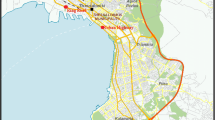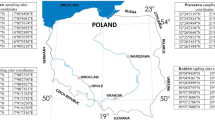Abstract
-
DOI: http://dx.doi.org/10.1065/lca2006.04.013
-
Goal, Scope and background. Methodologies based on life cycle assessment have been developed to calculate the environmental impact of dwellings. Human health damages due to exposure of occupants to substances and noise emitted by road traffic are not included in these methodologies. In this study, a methodology has been developed to calculate damages to human health of occupants caused by substances and noise emitted by neighbourhood car traffic. The goal of this study is to assess the influence of the location of the dwelling on the health of the occupants, compared to the damage to human health associated with the rest of the life cycle of that dwelling.
Methods
Fate, exposure and human health effects were addressed in the calculation procedure. The methodology takes into account road traffic noise and four hazardous substances emitted by cars. Chemical fate factors were calculated with an outdoor exposure model for traffic pollutants, air entrance rates and indoor intake fractions. Fate factors for noise were based on noise levels generated by traffic. Effect factors for substances were based on unit risk factors and extrapolated dose-effect relationships. Effect factors for noise were based on linear relationships between noise level changes and health effects, while taking into account threshold values for noise levels for negative impacts. Damage factors were calculated on the basis of disability adjusted life years (DALYs). Human health damage scores for changes in traffic situations have been calculated for differences in three traffic scenarios in residential areas and for the Dutch reference dwellings.
Results and Discussion
For the Dutch reference dwelling and the traffic situations considered and taking into account noise, particulate matter (PM10), sulphur dioxide, benzene and benzo[ a]pyrene, communication disturbances and sleep disturbances due to noise and health effects of PM10 appear to be dominant in the total damage to human health of occupants caused by neighbourhood car traffic. A sensitivity analysis has shown that a reduction of the car and truck density and of the distance of the façade of the dwellings to the road axis has the largest positive effect on the human health of the occupants, and that a decrease of speed by traffic impediments has only a marginal or even a negative effect. Differences in overall indoor health damage due to different traffic scenarios may be 1.5 to 2 times
Conclusion
Within the limitations of this study, damages to human health of occupants due to indoor exposure to road traffic noise and pollutants appear to be in the same order of magnitude when compared with damages associated with the life cycle of dwellings. This emphasizes the importance to include the location of dwellings in the life cycle assessment of the dwelling.
Similar content being viewed by others
Author information
Authors and Affiliations
Corresponding authors
Rights and permissions
About this article
Cite this article
Huijbregts, M., Hertwich, E. & Reijnders, L. Including Human Health Damages due to Road Traffic in Life Cycle Assessment of Dwellings. Int J Life Cycle Assessment 11 (Suppl 1), 64–71 (2006). https://doi.org/10.1065/lca2006.04.013
Received:
Accepted:
Published:
Issue Date:
DOI: https://doi.org/10.1065/lca2006.04.013




